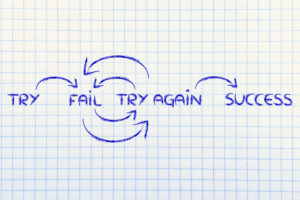OK, we are more than six months into this here in the US, and you would think people would do a better job of basic math. The CDC just announced that 6% of the COVID deaths were from COVID alone, meaning that 94% of those who died had other complications. Of course, their death gets counted as a COVID death even though they might have died a few months later from these “comorbidities.” I do get the concerns here on all sides. We started this journey not taking things as seriously as we should … thanks to China and the WHO who told us that everything was OK and this thing was not contagious. Thanks a lot!

But, now we seem to be getting this under control here in the US, winding our way through the complex process of opening this and shuttering that to manage the time before we do have a vaccine. We do need to keep the public from thinking we have an “all clear” and we can go back to our normal lives … whatever that means anymore.
But, I can’t help but react to a USA Today article that quotes CNBC predicting we will have over 400,000 deaths here in the US by year-end. Read it for yourself.
Let’s do a little math together. We have had about 10 million Americans infected so far with this disease (and yes, those are the ones who have been tested so who knows how many asymptomatic ones we have as well) and we have lost about 190,000 lives as well. So, including the stupidity of the early days where we didn’t know what we were dealing with and were told we were nuts for thinking this was dangerous, we lost about 2% of the reported cases. Let’s hold onto that 2% and say that it is probably a worst-case average.
The past few weeks have seen the daily cases continually decline from 70,000 mid-July to 60,000 by August 1st and then to under 40,000 by the end of August. At this rate, we will be down to 20,000 new cases per day by the end of October, and then down to minimal levels by the end of November. Assuming a triangle for this data we would estimate another 2.7 million infected … not good, but not a disaster either, and about another 54,000 deaths. The last time I checked, 54 + 190 is not even close to 410,000.
By the way, even my math assumes we simply stay the course we are on … doing nothing worse, and wouldn’t it be nicer if the media gave us all praise for doing what we are doing to stem this pandemic? Wouldn’t it be nice if the news media offered us the promise of a better future and getting back together again as we have done in the past?
Nope, that doesn’t sell papers or online views.


 and some may harbor racist bias … but I personally believe that most are good people and are dedicated to protecting all citizens from harm.
and some may harbor racist bias … but I personally believe that most are good people and are dedicated to protecting all citizens from harm.


 About this time of the year, all the way back in 1882, Thomas Edison’s Pearl Street Station started the first electric power utility which was on Wall Street in New York City. Not only did Edison invent the light bulb, but his Edison Illuminating Company also designed the Pearl Street Station: the first-ever U.S. commercial central power station. The station was located at 255-257 Pearl Street in Manhattan and it was powered by coal.
About this time of the year, all the way back in 1882, Thomas Edison’s Pearl Street Station started the first electric power utility which was on Wall Street in New York City. Not only did Edison invent the light bulb, but his Edison Illuminating Company also designed the Pearl Street Station: the first-ever U.S. commercial central power station. The station was located at 255-257 Pearl Street in Manhattan and it was powered by coal.
